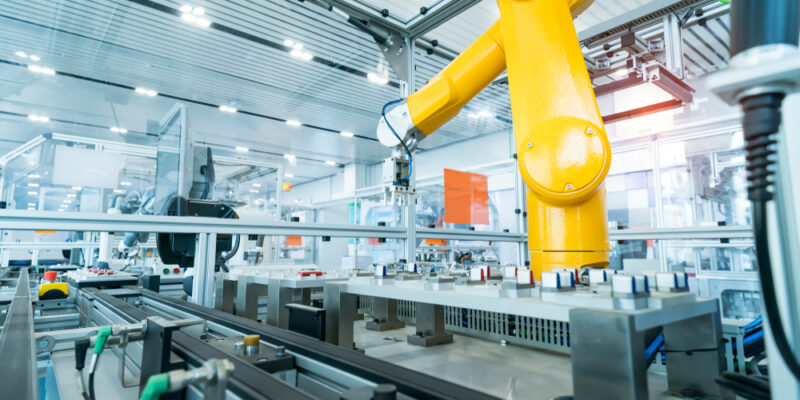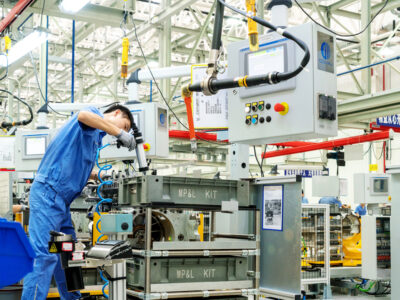The manufacturing sector has always been the backbone of global economies, driving innovation, creating jobs, and providing essential goods. However, as we progress further into the 21st century, the industry is faced with an array of complex challenges. These challenges, driven by technological advancements, shifting global markets, and societal expectations, require manufacturers to adapt quickly and strategically to remain competitive. Below, we explore some of the key challenges that are currently facing the industry manufacturing sector.
1. Supply Chain Disruptions
One of the most prominent challenges facing the manufacturing sector today is the increasing frequency and severity of supply chain disruptions. The global nature of supply chains means that manufacturers rely on various suppliers and raw materials from different parts of the world. Factors such as natural disasters, geopolitical tensions, trade disputes, and even pandemics like COVID-19 have exposed vulnerabilities in these global networks. The COVID-19 pandemic, in particular, caused significant disruptions, with factories closing, shipping routes being blocked, and labor shortages making it difficult for manufacturers to meet demand.
To combat these disruptions, many manufacturers are beginning to diversify their supply chains, sourcing materials from multiple suppliers and regions. Additionally, they are adopting more flexible and adaptive supply chain management systems that can respond to unforeseen events quickly.
2. Labor Shortages and Skills Gap
Another critical issue for manufacturers is the growing labor shortage and the widening skills gap. As baby boomers retire, there is a significant need for skilled workers to take their place. However, there is a mismatch between the skills that are in demand and those possessed by available workers. Many younger workers are not entering the manufacturing sector, as they may not see it as an attractive career path due to perceptions of outdated working conditions and a lack of innovation in the field.
This shortage of skilled labor is a major challenge, as it can result in reduced productivity, lower quality products, and slower innovation. To address this issue, manufacturers are investing in workforce development programs and partnerships with educational institutions to equip workers with the skills necessary for modern manufacturing. Additionally, automation technologies, such as robotics and AI, are being increasingly integrated to complement the workforce and handle repetitive or hazardous tasks.
3. Rising Raw Material Costs
The cost of raw materials has been steadily increasing in recent years, and this trend shows no signs of slowing down. Fluctuations in prices for critical materials, such as metals, plastics, and energy resources, have made it more difficult for manufacturers to predict their costs and maintain profit margins. Factors such as scarcity, geopolitical instability, and market volatility contribute to these rising costs.
Manufacturers must explore ways to mitigate the impact of rising raw material costs, such as seeking alternative materials, improving material efficiency, and investing in recycling technologies. In some cases, manufacturers are also turning to additive manufacturing, or 3D printing, which allows for precise use of materials and reduces waste.
4. Technological Advancements and Integration
While technological advancements offer exciting opportunities for manufacturers, they also present challenges. The integration of advanced technologies such as artificial intelligence (AI), robotics, Internet of Things (IoT), and automation into manufacturing processes requires significant investments in both infrastructure and training. Many manufacturers, particularly small and medium-sized enterprises (SMEs), find it difficult to keep pace with the rapid development of technology due to budget constraints or a lack of in-house expertise.
As the manufacturing landscape becomes more technologically driven, businesses are faced with the challenge of integrating new systems and platforms while ensuring that their existing operations remain efficient. The complexity of maintaining these systems, alongside data security concerns, further adds to the challenge.
To overcome this, manufacturers must develop clear digital transformation strategies that include training programs for employees, partnerships with tech firms, and investments in cybersecurity to protect valuable data.
5. Environmental and Sustainability Pressures
Sustainability is a growing concern within the manufacturing industry. As environmental awareness rises, there is increasing pressure on manufacturers to adopt greener practices and reduce their carbon footprint. Governments are implementing stricter regulations to limit emissions, manage waste, and conserve natural resources. Consumers are also demanding more eco-friendly products and are willing to support companies that demonstrate a commitment to sustainability.
The challenge for manufacturers lies in balancing the need for efficiency and profitability with the need for sustainability. This includes transitioning to renewable energy sources, reducing waste, and implementing circular economy principles. Sustainability may also require investments in more energy-efficient technologies and processes, as well as efforts to reduce the environmental impact of raw materials sourcing.
6. Global Competition and Market Pressure
In today’s interconnected global economy, manufacturers are facing intense competition not just from local players but also from companies abroad, particularly from low-cost manufacturing countries. This global competition pressures manufacturers to reduce costs, increase speed, and improve quality in order to stay competitive. Furthermore, shifting consumer preferences and demand patterns are constantly evolving, forcing manufacturers to be agile and responsive.
To stay ahead of the competition, manufacturers must embrace innovation, diversify their product offerings, and focus on developing unique selling propositions. They also need to implement strategies to enhance operational efficiency, such as lean manufacturing techniques, while remaining flexible enough to adjust to changes in the market.
7. Cybersecurity Threats
As manufacturing becomes more connected through the Industrial Internet of Things (IIoT), the risk of cybersecurity breaches increases. Manufacturing plants are increasingly using digital platforms to monitor production processes, control machinery, and manage inventory. However, the more connected these systems become, the more vulnerable they are to cyberattacks, which can result in data theft, production downtime, or even damage to critical infrastructure.
Manufacturers must prioritize cybersecurity by investing in robust security systems, conducting regular vulnerability assessments, and training staff to recognize potential threats. As cyber threats continue to evolve, so must the strategies to protect valuable intellectual property and data.
8. Regulatory Compliance
The manufacturing sector is heavily regulated, with governments enforcing a wide range of laws and regulations concerning worker safety, environmental protection, and product quality. Staying compliant with these regulations is an ongoing challenge, especially for manufacturers operating in multiple regions with differing legal frameworks.
Keeping up with these regulations can be time-consuming and costly, particularly when non-compliance can lead to fines, legal consequences, or damage to a company’s reputation. Manufacturers must implement strong compliance management systems and regularly review and update their policies to ensure they meet local and international regulations.
9. Product Complexity and Customization Demands
Consumers today expect more personalized products, which means manufacturers must be able to offer greater customization. At the same time, the complexity of the products themselves is increasing, driven by technological innovations and consumer preferences for advanced features. This places additional pressure on manufacturers to adopt more flexible and agile production methods.
To meet these demands, manufacturers are implementing advanced manufacturing techniques such as additive manufacturing and modular production systems, which allow for greater product variation without compromising efficiency.
10. Risk Management and Uncertainty
The ever-changing landscape of the global economy presents a significant challenge in terms of risk management. Manufacturers must navigate unpredictable factors such as fluctuating demand, supply chain instability, and shifts in consumer behavior. The COVID-19 pandemic highlighted how unexpected events could disrupt manufacturing processes worldwide, leading to a reassessment of risk management strategies.
Manufacturers must adopt more proactive risk management approaches, such as diversifying supply chains, building contingency plans, and leveraging data analytics to predict and mitigate potential risks before they become critical issues.
Navigating the Future of Manufacturing
The challenges facing the manufacturing sector today are varied and complex. However, with the right strategies and technologies, manufacturers can overcome these hurdles and build a foundation for sustainable growth and competitiveness. By investing in advanced technologies, fostering workforce development, and staying adaptable to market changes, the manufacturing industry can continue to play a central role in the global economy.









Comments